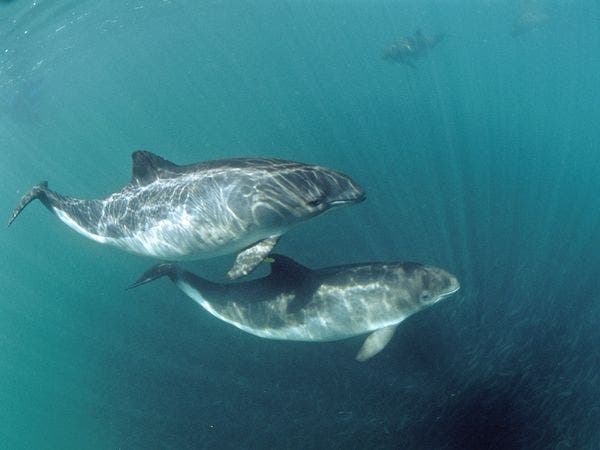Dolphins in European waters are struggling to reproduce because of the chemical pollution that lingers in their bodies for a very long time – even for their entire lifetime. Scientists were surprised to find polychlorinated biphenyls (PCBs) in their bodies, as PCBs have been banned 30 years ago.
We’re pushing the planet and its ecosystems way beyond their sustainable levels, and several studies have warned that we, as a species, are causing a global mass extinction. Ocean life is especially threatened, as Sinead Murphy of the National University of Dublin pointed out once more. She and her team reported that dolphins are still threatened by substances banned three decades ago.
Polychlorinated biphenyls were widely used as dielectric and coolant fluids – they reduced the chance of fires occurring in electrical fields. However, due to their environmental toxicity and classification as a persistent organic pollutant, PCB production was banned in 1979. Several countries have reported pollution issues with PCBs, including Japan, Belgium, Italy, the UK and the US.
But scientists were surprised to see that PCBs still persist in the fat tissue of harbour porpoises (Phocoena phocoena) at relatively high levels. Researchers focused on porpoises in the UK harbor, and found that almost 20 percent of sexually mature females showed evidence of stillbirth, fetal death or recent miscarriage – likely as a consequence of PCB pollution. When they compared these figures to non-polluted areas, they found much lower rates.
“A further 16.5 percent had infections or tumors of reproductive organs that could have contributed to breeding failure,” said the study.
The harbour porpoise is one of the smallest marine mammals. As its name implies, it stays close to coastal areas or river estuaries, and as such, is highly vulnerable to coastal pollution. They also tend to accumulate pollutants in their fat tissue.
To make things even worse, they found that pollution can be passed on from mother to calf, further extending the problems. It seems quite likely that other populations suffer from similar issues.
“UK harbour porpoises are part of a larger northeast Atlantic population and our research suggests a population-level risk from PCB exposure,” said lead researcher Sinead Murphy.
The study appears in the open-access journal PLOS ONE.










